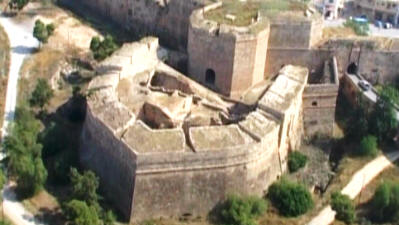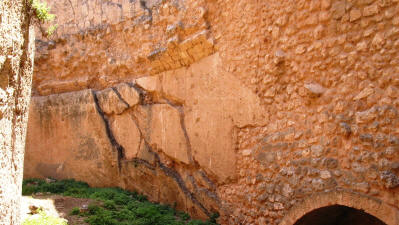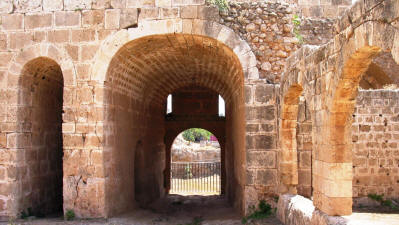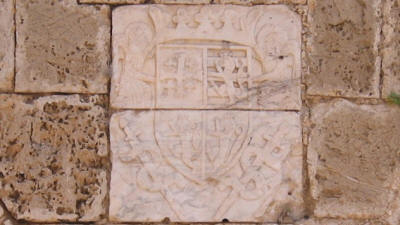Land Gate (Akkule, Ravelin, or Rivettina Bastion),
Famagusta, North Cyprus
 |
| The Akkule |
The Land Gate is one of the two original entries to the walled city of Famagusta, the other one being the Sea Gate, and is the most spectacular. It is the second oldest part of the walls, after the Othello's Tower. It is also the most interesting part to those interested in military fortifications.
Over the centuries it has been called the Ravelin, the Rivettina Bastion and the Akkule, depending on who ruled Famagusta at the time.
 |
| Walls Strengthened by Building on Existing Rock |
The original Ravelin was built by the French Lusignans as a tower that stood outside Famagusta's walls. Its function was to guard the main entry to the city which was nearby. It's name is from a corruption of the old French, reflecting its half moon shape.
 |
| Original Entrance to the Rivettina Bastion |
When the Venetians took over Famagusta in 1489 they decided to strengthen Famagusta's defences in anticipation of a threat from the Ottomans. They built a new set of walls, and incorporated the Ravelin into the new city walls. Renamed the Rivettina Bastion, it became a huge defensive structure, bristling with cannon emplacements, all connected by a series of passages and chambers. Part of the secret of Rivettina Bastion's strength was that the Venetians cleverly built the new walls, where possible, on existing rocky outcrops, making them very difficult to undermine.
 |
| Coat of Arms Still Visible |
The threat from the Ottomans proved not to be an idle one, and in 1570, the Venetians in Famagusta found themselves under siege. Although the walls were never breached, after ten months the Venetians were forced to surrender, and the Ottomans took possession of Famagusta and the Rivettina Bastion, which was renamed the Akkule, or White Tower, supposedly from the colour of the flag the Venetians hoisted when they surrendered.
When the Ottomans arrived on the scene, the entrance to the city was still through the Akkule, over a drawbridge protected by a portcullis, evidence of which still remains. The entrance used today was built at this time, along with the bridge over the moat.
A visitor to the Akkule today, can still wander through the maze of passages, and contemplate what it must have been like to be here 450 years ago in the middle of a medieval siege.
On the city side of the gate, in the passage leading from the Akkule, you can still see frescoes and coats of arms dating back to the Venetians, while to one side the Ottomans built a small mosque in 1619 for the use of the city guards.
See the location on Google maps.
Back to Famagusta index.